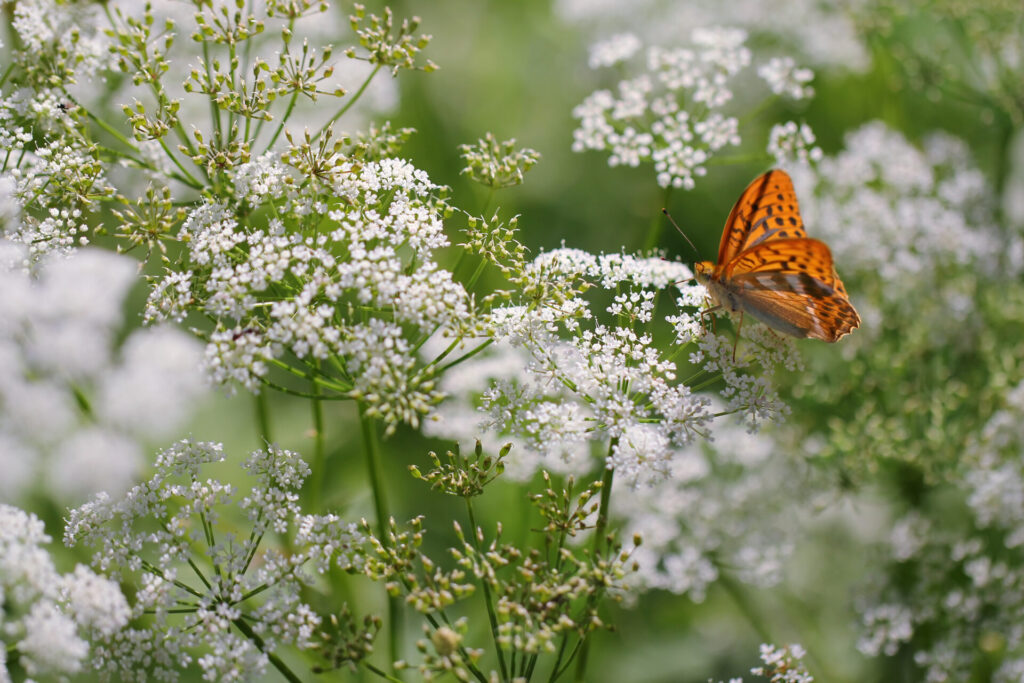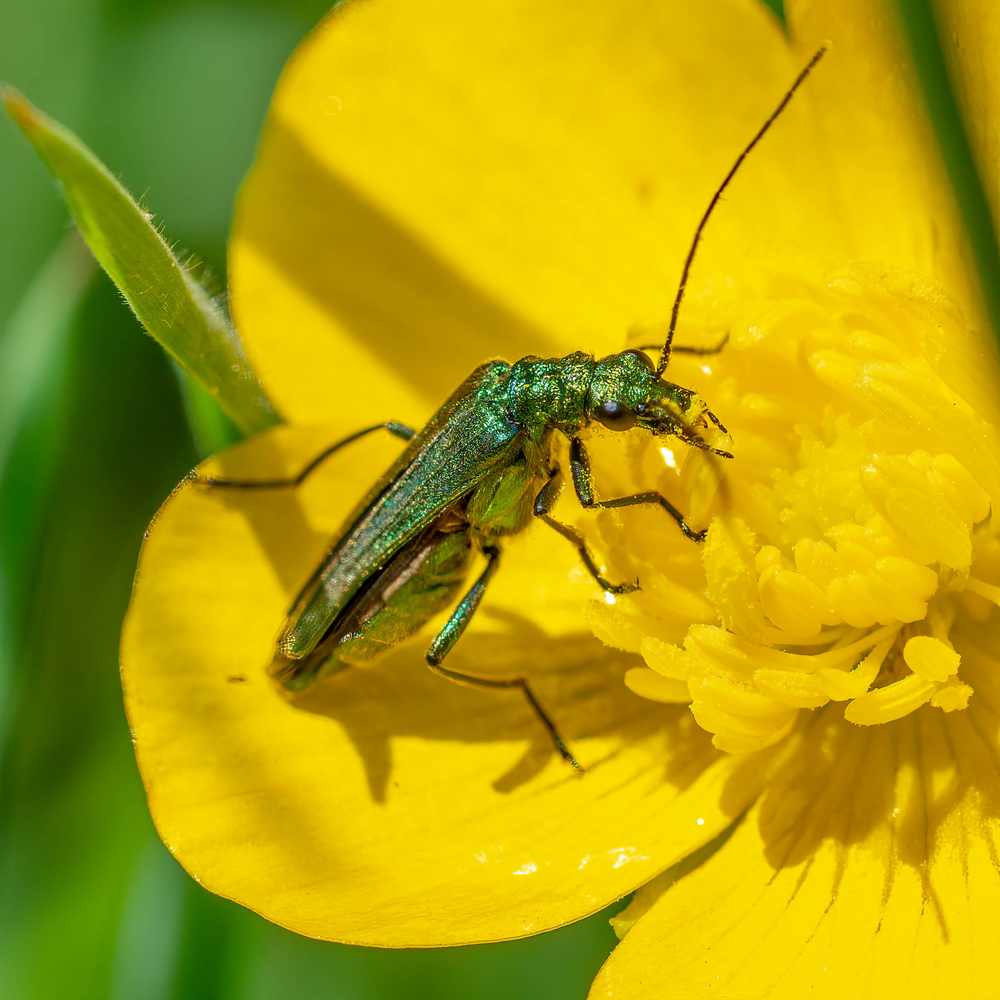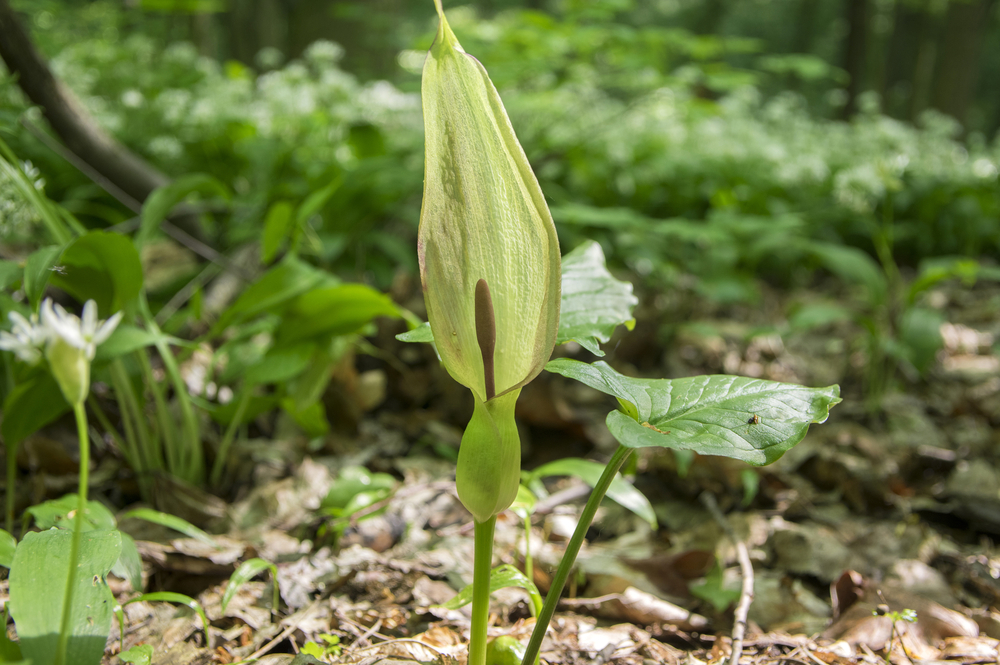Most native wildflowers rely on insects to pollinate them – former president of DWT Tony Bates explains how the flowers are designed to attract them

nectar and, in many cases, to eat the pollen – an important source of protein. Flowers produce lots of pollen, so that there is a surplus available to attach to an insect’s body and legs, facilitating the transfer of pollen to the next flowers they visit. It’s a happy relationship – the insects get fed and the flowers get to reproduce.
Wildflowers come in an amazing range of shapes and sizes, and insects favour different flowers depending on their colour, scent, design and ease of landing. For example, beetles prefer buttercups and daisies which are easy for them to land on, while smaller flowers such as speedwells are particularly attractive to small flies.
Flowers such as flax have a long spur containing nectar, which makes them particularly suited to butterflies and moths – those with a long proboscis, enabling them to reach the nectar source.

Most flowers produce a scent – and no two scents are the same. Insects will often travel a long distance to find their favourite flower because of its individual scent.
Another family of plants, the umbellifers, have a wide head with multiple small flowers, each with only a small amount of nectar. Visiting insects enjoy a ‘feast in small bites’, taking small quantities of nectar from each individual flower.

Insects’ eyes enable them to see a much greater range of colours than we do. They can see ultraviolet light, which makes the flower stand out clearly from the surrounding plant structure. This ability helps them to aim more accurately at their food source. Smaller flowers also often have markings or guidelines to entice the insect into the nectar source. These include speedwell, tiny blue flowers with a bright centre, and late summer’s eyebright, with its yellow landing zone (see image, right).
Insects may use pollen, nectar or both as food, either as adults or to feed their young. Hoverflies, for instance, enjoy a good meal of pollen.
On a sunny day in springtime, emerging insects will make a buzz of activity around bluebells, primroses and celandines.

Wild arum, with the wonderful common nickname of Lords and Ladies, which you may have seen featured in the BBC Wild Isles series, has a bizarre way of attracting small flies for pollination. It has a distinctive purple or pale green sheath surrounding a central ‘spadix’ with a spike of tiny flowers on a fleshy stem. Unlike the fragrant scent of most flowers, it produces the smell of rotten meat late in the day. Tempted by this, small flies become trapped in the bottom of the sheath by a shield of stiff downward-pointing hairs. The next day, the hairs wither, which allows the flies to scramble out over the pollen stamens to visit another arum.
Recent research suggests that in the UK, flying insects have declined by 60 per cent in the past 20 years. The serious decline in insect numbers is one of the greatest challenges we face – it is causing a loss of wildlife right at the bottom of the food chain. It is crucial that habitats are provided to allow the plants upon which insects depend to thrive. As well as planting and encouraging wildflowers, it is important that we provide more undisturbed ground, dead wood piles and decomposing vegetation – key places for the life cycles of insects.
Learn more at wildlife.trusts.org

